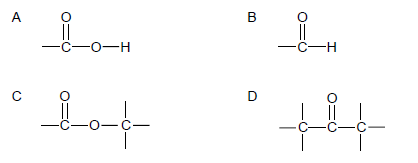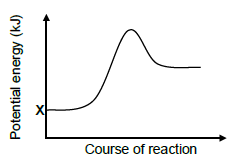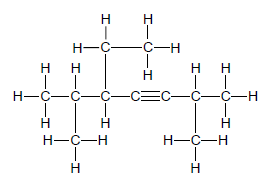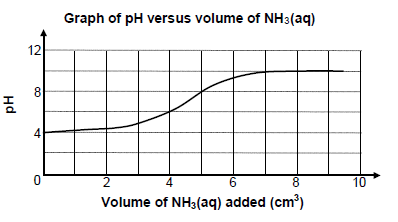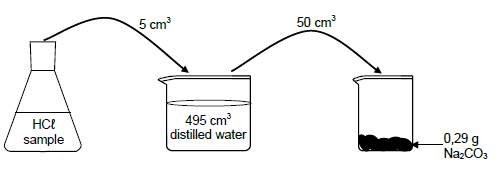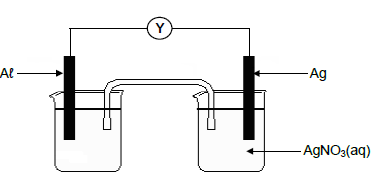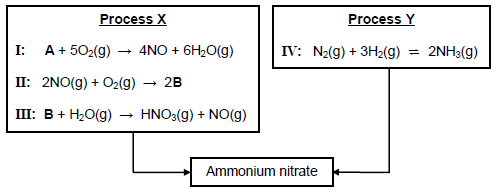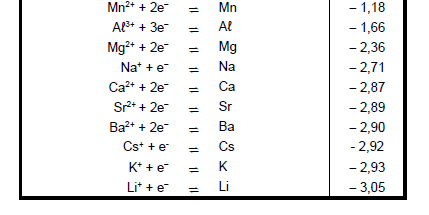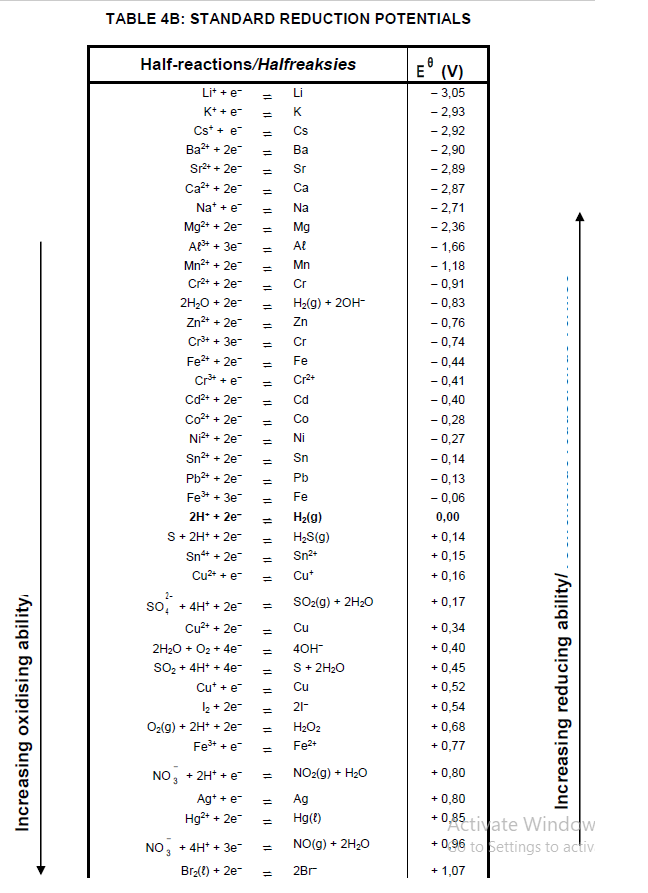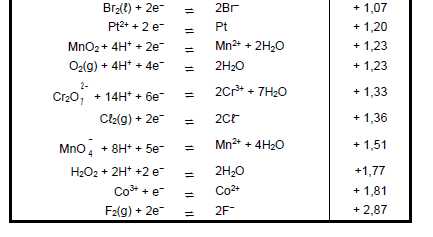PHYSICAL SCIENCES PAPER 2 GRADE 12 QUESTIONS - NSC PAST PAPERS AND MEMOS NOVEMBER 2017
Share via Whatsapp Join our WhatsApp Group Join our Telegram GroupPHYSICAL SCIENCES: CHEMISTRY (PAPER 2)
GRADE 12
NOVEMBER 2017
NATIONAL SENIOR CERTIFICATE
INSTRUCTIONS AND INFORMATION
- Write your centre number and examination number in the appropriate spaces on the ANSWER BOOK.
- This question paper consists of TEN questions. Answer ALL the questions in the ANSWER BOOK.
- Start EACH question on a NEW page in the ANSWER BOOK.
- Number the answers correctly according to the numbering system used in this question paper.
- Leave ONE line between two subquestions, for example between QUESTION 2.1 and QUESTION 2.2.
- You may use a non-programmable calculator.
- You may use appropriate mathematical instruments.
- You are advised to use the attached DATA SHEETS.
- Show ALL formulae and substitutions in ALL calculations.
- Round off your FINAL numerical answers to a minimum of TWO decimal places.
- Give brief motivations, discussions, et cetera where required.
- Write neatly and legibly.
QUESTION 1: MULTIPLE-CHOICE QUESTIONS
Various options are provided as possible answers to the following questions. Choose the answer and write only the letter (A–D) next to the question number (1.1–1.10) in the ANSWER BOOK, for example 1.11 D.
1.1 The IUPAC name of an organic compound with molecular formula C7H14O2:
- Heptanal
- Heptan-1-ol
- Heptan-2-ol
- Heptanoic acid (2)
1.2 Which ONE of the following structures is the functional group of aldehydes?
1.3 Which ONE of the following equations represents a cracking process?
- 5CH2 = CH2 → - (CH2CH2)5 -
- CH3(CH2)5CH = CH2 + H2 → CH3(CH2)6CH3
- CH3(CH2)6CH3 → CH3(CH2)4CH3 + CH2 = CH2
- CH3(CH2)7OH → CH3(CH2)5CH = CH2 + H2O (2)
1.4 The potential energy diagram for a chemical reaction is shown below.
Consider the following statements regarding the graph above:
- : X represents the potential energy of the products formed during the reverse reaction.
- : The graph could be a representation of the change in potential energy for the following reaction:
CaCO3(s) ⇌ Ca2+(aq) +CO 2-3(aq) ΔH > 0 - : The graph could be a representation of the change in potential energy for the combustion of methane.
Which of the statements above are TRUE?
- I and II only
- II and III only
- I and III only
- I, II and III (2)
1.5 A certain chemical reaction reaches equilibrium at 25 °C. The equilibrium constant, Kc, for the reaction at this temperature is 1,0 x 10-4.
Which ONE of the following statements regarding this reaction at equilibrium is CORRECT?
- The concentration of the products is equal to that of the reactants.
- The concentration of the products is higher than that of the reactants.
- The concentration of the products is lower than that of the reactants.
- The rate of the forward reaction is lower than the rate of the reverse reaction. (2)
1.6 Consider the following chemical reaction at equilibrium in a closed container:
2HgO(s) ⇌ 2Hg(ℓ) + O2(g)
More HgO(s) is now added to the container at constant temperature.
How will the number (in moles) of O2(g) and the value of Kc be affected at equilibrium?
| NUMBER OF MOLES OF O2 | Kc | |
| A | Increases | Increases |
| B | Increases | Remains the same |
| C | Remains the same | Remains the same |
| D | Remains the same | Increases |
(2)
1.7 Which ONE of the following solutions, each of concentration 0,1 mol∙dm-3, has the highest pH?
- HNO3(aq)
- NH4Cℓ(aq)
- Na2CO3(aq)
- CH3COOH(aq) (2)
1.8 The cell notation for a galvanic cell is as follows:
Ni(s) | Ni2+ (1 mol∙dm-3) || Pb2+ (1 mol∙dm-3) | Pb(s)
Which ONE of the following statements is CORRECT for this cell?
- Ni is oxidised.
- Pb(s) is reduced.
- Ni2+(aq) is the oxidising agent.
- Pb2+ is the reducing agent. (2)
1.9 Which ONE of the following combinations CORRECTLY shows the products formed during the electrolysis of a CONCENTRATED sodium chloride solution?
| CATHODE | ANODE | |
| A | Hydrogen | Sodium |
| B | Hydrogen | Chlorine |
| C | Chlorine | Sodium |
| D | Chlorine | Hydrogen |
(2)
1.10 Which ONE of the following is NOT part of the eutrophication process?
- Algal bloom
- Bacterial nitrogen fixation
- Depletion of oxygen in water
- Increase in plant nutrients in water (2)
[20]
QUESTION 2 (Start on a new page.)
2.1 Study the structural formula below.
For this compound, write down the:
2.1.1 Homologous series to which it belongs (1)
2.1.2 IUPAC name (2)
2.1.3 IUPAC name of the organic acid used in its preparation (1)
2.1.4 STRUCTURAL FORMULA of its straight chain (unbranched) functional isomer (2)
2.2 Write down the structural formula of 4-methylpentan-2-one. (3)
2.3 Consider the structural formula below.
For this compound, write down the:
2.3.1 General formula of the homologous series to which it belongs (1)
2.3.2 IUPAC name (3)
[13]
QUESTION 3 (Start on a new page.)
The vapour pressure versus temperature graph below was obtained for four straight chain (unbranched) alkanes (P, Q, R and S).
FROM P TO S, EACH COMPOUND DIFFERS FROM THE PREVIOUS COMPOUND BY A –CH2 GROUP.
The vapour pressures are measured in mmHg. Atmospheric pressure is 760 mmHg.
Graph of vapour pressure versus temperature
3.1 Give a reason why alkanes are said to be SATURATED. (1)
3.2 Define vapour pressure. (2)
3.3 Use the information in the graph above to answer the following questions.
3.3.1 What is the effect of an increase in temperature on vapour pressure? Choose from INCREASES, DECREASES or NO EFFECT. (1)
3.3.2 Which compound has a boiling point of approximately 68 °C? Give a reason for the answer. (2)
3.3.3 Which compound has the longest chain length? Fully explain the answer. (4)
3.4 Compound P has FIVE carbon atoms.
3.4.1 Draw the structural formula of a chain isomer of P. Write down the IUPAC name of this isomer. (3)
3.4.2 How will the vapour pressure of this isomer compare with that of compound P? Choose from HIGHER THAN, LOWER THAN or EQUAL TO. (1)
[14]
QUESTION 4 (Start on a new page.)
The flow diagram below shows how an alcohol (compound P) can be used to prepare other organic compounds. The letters A to E represent different organic reactions. X, Y and Z are organic compounds.
4.1 Is compound P a PRIMARY, SECONDARY or TERTIARY alcohol? Give a reason for the answer. (2)
4.2 Write down the type of:
4.2.1 Elimination reaction represented by A (1)
4.2.2 Addition reaction represented by B (1)
4.2.3 Elimination reaction represented by D (1)
4.3 Sodium hydroxide is used as one of the reactants in reaction C.
4.3.1 What type of reaction takes place here? (1)
4.3.2 State the TWO reaction conditions for this reaction. (2)
4.3.3 Write down the IUPAC name of compound X (2)
4.4 Write down the FORMULA of an inorganic reactant needed for reaction D. (1)
4.5 Using STRUCTURAL FORMULAE, write down a balanced equation for reaction E. (3)
4.6 Write down the IUPAC name of compound Z. (1)
[15]
QUESTION 5 (Start on a new page.)
A group of learners uses the reaction between powdered zinc and EXCESS dilute hydrochloric acid to investigate one of the factors that affects the rate of a chemical reaction. The balanced equation for the reaction is:
Zn(s) + 2HCℓ(aq) → ZnCℓ2(aq) + H2(g)
They conduct two experiments. The reaction conditions used are summarised in the table below.
| EXPERIMENT | TEMPERATURE (°C) | VOLUME OF HCℓ (cm3) | CONCENTRATION OF HCℓ (mol∙dm-3) | MASS OF Zn (g) |
| I | 25 | 200 | 0,25 | x |
| II | 25 | 200 | 0,40 | x |
The results obtained are shown in the graph (not drawn to scale) below
Graph of volume of H2(g) produced versus time
5.1 Define reaction rate. (2)
5.3 Which curve, P or Q, represents the results of experiment I? Explain the answer. (3)
5.4 The average rate of the production of hydrogen gas, as represented by graph P, was 15 cm3∙s-1. Calculate the mass of zinc used. Take the molar gas volume at 25 °C as 24 000 cm3. (5)
The results obtained are shown in the graph (not drawn to scale) below.
5.2 Write down an investigative question for this investigation. (2)
5.5 In a third experiment (experiment III), 200 cm3 of a 0,25 mol∙dm-3 dilute hydrochloric acid solution at 35 °C reacts with the same amount of zinc powder as in experiment I and experiment II.
5.5.1 How will the heat of reaction of experiment II compare with that of experiment III? Choose from MORE THAN, LESS THAN or EQUAL TO. (1)
5.5.2 How will the activation energy of the reaction in experiment I compare with that of the reaction in experiment III? Choose from MORE THAN, LESS THAN or EQUAL TO. (1)
5.6 The rate of the reaction in experiment III is higher than that of experiment I.
Fully explain this statement by referring to the collision theory. (3)
[17]
QUESTION 6 (Start on a new page.)
Carbonyl bromide, COBr2, decomposes into carbon monoxide and bromine according to the following balanced equation:
COBr2(g) ⇌ CO(g) + Br2(g) ΔH > 0
Initially COBr2(g) is sealed in a 2 dm3 container and heated to 73 °C. The reaction is allowed to reach equilibrium at this temperature. The equilibrium constant for the reaction at this temperature is 0,19.
6.1 Define chemical equilibrium. (2)
At equilibrium it is found that 1,12 g CO(g) is present in the container.
6.2 Calculate the:
6.2.1 Equilibrium concentration of the COBr2(g) (7)
6.2.2 Percentage of COBr2(g) that decomposed at 73 °C (4)
6.3 Which ONE of the following CORRECTLY describes the Kc value when equilibrium is reached at a lower temperature?
| Kc < 0,19 | Kc > 0,19 | Kc = 0,19 |
(1)
6.4 The pressure of the system is now decreased by increasing the volume of the container at 73 °C and the system is allowed to reach equilibrium.
How will the number of moles of COBr2(g) be affected? Choose from INCREASES, DECREASES or REMAINS THE SAME. Explain the answer. (3)
[17]
QUESTION 7 (Start on a new page.)
7.1 Ammonia ionises in water to form a basic solution according to the following balanced equation:
NH3(g) + H2O(ℓ) ⇌ NH+4(aq) + −OH(aq)
7.1.1 Is ammonia a WEAK or a STRONG base? Give a reason for the answer. (2)
7.1.2 Write down the conjugate acid of NH3(g). (1)
7.1.3 Identify ONE substance in this reaction that can behave as an ampholyte in some reactions. (1)
7.2 A learner adds distilled water to a soil sample and then filters the mixture. The pH of the filtered liquid is then measured.
He then gradually adds an ammonia solution, NH3(aq), to this liquid and measures the pH of the solution at regular intervals. The graph below shows the results obtained.
Graph of pH versus volume of NH3(aq)
7.2.1 Is the soil sample ACIDIC or BASIC? Refer to the graph above and give a reason for the answer. (2)
7.2.2 Calculate the concentration of the hydroxide ions (−OH) in the reaction mixture after the addition of 4 cm3 of NH3(aq). (4)
7.3 A laboratory technician wants to determine the concentration of a hydrochloric acid (HCℓ) sample. He adds 5 cm3 of the HCℓ sample to 495 cm3 of distilled water to give 500 cm3 of dilute hydrochloric acid, HCℓ(aq).
During a reaction 50 cm3 of this dilute hydrochloric acid solution, HCℓ(aq), reacts completely with 0,29 g of sodium carbonate, Na2CO3(s).
The balanced equation for the reaction is:
Na2CO3(s) + 2HCℓ(aq) → 2NaCℓ(aq) + CO2(g) + H2O(ℓ)
Calculate the concentration of the hydrochloric acid sample. (7)
[17]
QUESTION 8 (Start on a new page.)
8.1 Learners set up a galvanic cell and measure its emf under standard conditions.
8.1.1 Write down the name of component Y. (1)
8.1.2 Is Aℓ the ANODE or the CATHODE? (1)
8.1.3 Write down the overall (net) cell reaction that takes place in this cell when it is working. (3)
8.1.4 Calculate the initial emf of this cell. (4)
8.2 Consider the half-cells, P, Q and R, represented in the table below.
| HALF-CELL | ||
| P | Q | R |
| Zn | Zn2+(aq) | Cℓ2 | Cℓ ─(aq) | Cu | Cu2+(aq) |
Different combinations of the half-cells above are compared to determine the highest emf produced under standard conditions.
8.2.1 Write down the NAME of a suitable electrode for half-cell Q. (1)
8.2.2 State the standard conditions under which the half-cells should operate to ensure a fair comparison. (2)
8.2.3 Write down the NAME or FORMULA of the strongest reducing agent in the half-cells above. (1)
8.2.4 Which combination of half-cells will produce the highest emf? Choose from PR, PQ or QR. (NO calculation is required.) (1)
[14]
QUESTION 9 (Start on a new page.)
The simplified diagram below represents an electrochemical cell used in the refining of copper. One of the electrodes consists of impure copper.
9.1 What type of power source, AC or DC, is used to drive the reaction in this cell? (1)
9.2 When an electric current passes through the CuCℓ2(aq), the mass of electrode P increases.
Is electrode P the CATHODE or the ANODE?
Write down the relevant half-reaction to support the answer. (3)
9.3 The impure copper contains zinc impurities which are oxidised to zinc ions.
Refer to the relative strengths of oxidising agents to explain why zinc ions will not influence the quality of the pure copper produced in this cell. (3)
9.4 Electrodes P and Q are now replaced by carbon electrodes.
9.4.2 How will the concentration of the electrolyte change as the reaction proceeds? Choose from INCREASES, DECREASES or REMAINS THE SAME.(1)
[9]
9.4.1 What will be observed at electrode Q? (1)
QUESTION 10 (Start on a new page.)
10.1 The equations below represent two industrial processes involved in the preparation of ammonium nitrate.
Write down the:
10.1.1 NAME of substance A (1)
10.1.2 FORMULA of substance B (1)
10.1.3 NAME given for reaction I (1)
10.1.4 NAME or FORMULA of the catalyst used in reaction I (1)
10.1.5 Name of process X (1)
10.1.6 Name of process Y (1)
10.1.7 Balanced equation for the preparation of ammonium nitrate from the products obtained in process X and process Y (3)
10.2 A 15 kg bag of fertiliser contains 5% phosphorus, 10% nitrogen and 15% potassium.
Calculate the:
10.2.1 Mass of phosphorus in the bag (2)
10.2.2 Mass of filler in the bag (3)
[14]
TOTAL: 150
DATA FOR PHYSICAL SCIENCES GRADE 12 PAPER 2 (CHEMISTRY)
TABLE 1: PHYSICAL CONSTANTS
| NAME | SYMBOL | VALUE |
| Standard pressure | pθ | 1,013 x 105 Pa |
| Molar gas volume at STP | Vm | 22,4 dm3∙mol-1 |
| Standard temperature | Tθ | Tθ 273 K |
| Charge on electron | e | e -1,6 x 10-19 C |
| Avogadro’s constant | NA | NA 6,02 x 1023 mol-1 |
TABLE 2: FORMULAE
n = m | n = N NA |
| c = n V or c = m MV | n = V Vm |
| caVa= na cbVb nb | pH= -log[H3O+] |
| Kw = [H3O+][OH-] = 1x10-14 at 298K | |
| Eθ cell = Eθ cathode – Eθ anode Eθ cell = Eθ reduction – Eθ oxidation Eθ cell = Eθ oxidising agent – Eθ reducing agent |

TABLE 4A: STANDARD REDUCTION POTENTIALS
